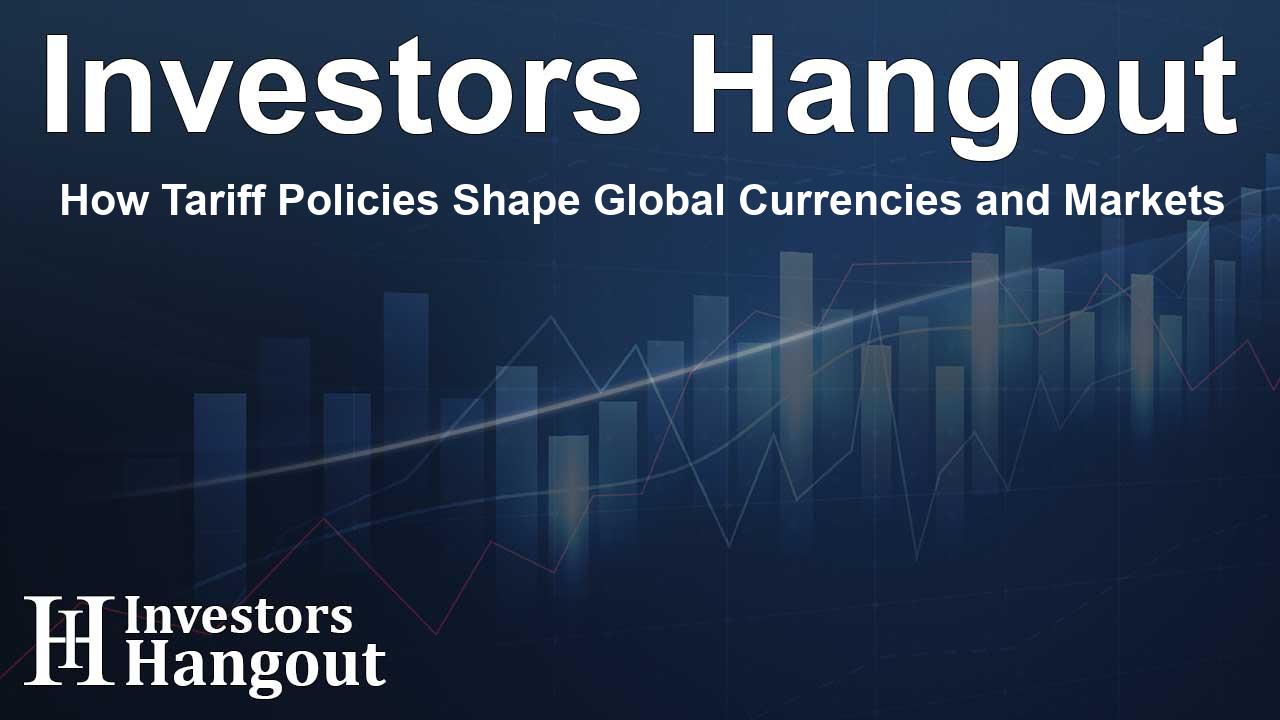How Tariff Policies Shape Global Currencies and Markets

Understanding the Impact of Tariff Policies on Markets
The world of finance is ever-changing, and a pivotal moment for Asian markets came with the recent tariff announcements from Donald Trump. As economic relationships fluctuate, it’s essential to analyze the effects of these decisions on global currencies.
The Immediate Reaction in Currency Markets
When Trump announced hefty tariffs, particularly a 25% tax on imports from Canada and Mexico and a 10% tariff on Chinese goods, markets reacted swiftly. Concerns about adverse economic impacts echoed throughout these nations, drawing warnings from officials about the potential for unfavorable repercussions.
In mere moments, the reaction in the currency markets was palpable. China's yuan dropped significantly, hitting its lowest point in nearly four months. The Canadian dollar followed suit, plummeting to its lowest level against the U.S. dollar in over four years, while the Mexican peso saw a decline of over 2%.
Investor Sentiment and Market Adjustments
As trading progressed, some of the initial panic began to ease. Investors reflected on the reality of the situation, remembering the negotiations from Trump's first term as president. They started considering the likelihood that this might be a tactic to bolster his bargaining power, rather than a definitive strategy destined to influence the markets permanently.
The effects of these announcements extended beyond currencies into the equity markets as well. Although the shift in stocks was more subdued, it still indicated the tension permeating the markets. For instance, China's CSI300 index slipped by 0.2%, and European markets recorded declines, with the STOXX 600 falling by 0.6%. However, the U.S. S&P 500 managed to close the day up by 0.6%, reflecting nuanced reactions from different regions.
Industry-Specific Impacts Due to Tariffs
Among the hardest-hit sectors were automotive stocks, where investors faced heightened anxiety concerning supply chain disruptions stemming from the tariffs. Major players in the European market, such as Stellantis and Volkswagen, reported declines of around 5% and 2%, respectively. In the U.S., General Motors experienced a steep fall, decreasing by 9% amid fears regarding the tariffs.
This volatility serves as a reminder that Trump’s policies can have significant ripple effects across markets. As investors digest this reality, reactions are often driven by news cycles, which can sway confidence in various sectors.
Monitoring Broader Economic Indicators
In addition to tariff news, broader economic indicators remain critical to understanding market dynamics. The upcoming U.S. personal consumption expenditures price index data is expected to yield insights into inflation trends, a figure closely monitored by the Federal Reserve. Recent minutes from the Fed have revealed divided opinions on the necessity and extent of future rate cuts, adding another layer of complexity.
Furthermore, other central banks will be making their monetary policy decisions. The Reserve Bank of New Zealand, for example, is anticipated to reduce interest rates by 50 basis points in its upcoming meeting, creating further implications for global markets.
Conclusion: Navigating Market Uncertainty
As the news continues to unfold, traders and investors will keep a keen eye on key developments that may shape the financial landscape. The intricate dance between countries over trade policies and tariffs will undoubtedly play a vital role in determining global currency value and market stability.
Frequently Asked Questions
What was the primary reason for the currency volatility?
The currency volatility stemmed from Trump's announcement of several hefty tariffs on imports from Mexico, Canada, and China, which raised concerns about global economic stability.
How did the tariffs affect the automotive industry?
The automotive sector faced significant stock declines, particularly among manufacturers, due to fears that tariffs would disrupt supply chains and increase production costs.
What indicators are important to watch following these announcements?
Key indicators include the U.S. personal consumption expenditures price index, inflation data, and interest rate decisions from central banks like the Reserve Bank of New Zealand.
How do tariffs influence investor sentiment?
Tariffs can create uncertainty in the markets, causing volatility as investors adjust their strategies and weigh the potential long-term impacts on different sectors.
What is the overall outlook on market adjustments?
The market’s outlook is cautious but adaptable, with investors likely to gradually stabilize as they reassess the implications of Trump’s policies and other economic indicators.
About The Author
Contact Hannah Lewis privately here. Or send an email with ATTN: Hannah Lewis as the subject to contact@investorshangout.com.
About Investors Hangout
Investors Hangout is a leading online stock forum for financial discussion and learning, offering a wide range of free tools and resources. It draws in traders of all levels, who exchange market knowledge, investigate trading tactics, and keep an eye on industry developments in real time. Featuring financial articles, stock message boards, quotes, charts, company profiles, and live news updates. Through cooperative learning and a wealth of informational resources, it helps users from novices creating their first portfolios to experts honing their techniques. Join Investors Hangout today: https://investorshangout.com/
The content of this article is based on factual, publicly available information and does not represent legal, financial, or investment advice. Investors Hangout does not offer financial advice, and the author is not a licensed financial advisor. Consult a qualified advisor before making any financial or investment decisions based on this article. This article should not be considered advice to purchase, sell, or hold any securities or other investments. If any of the material provided here is inaccurate, please contact us for corrections.
